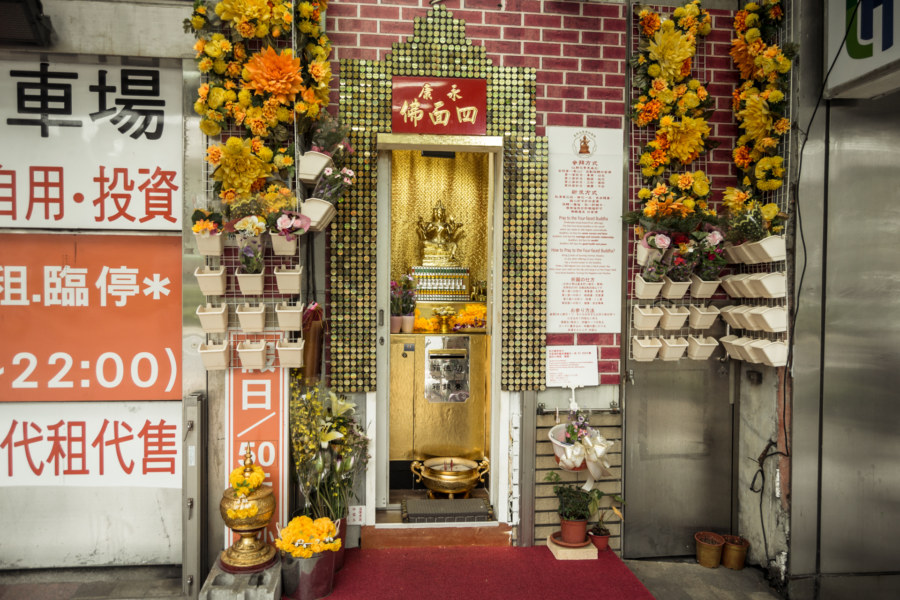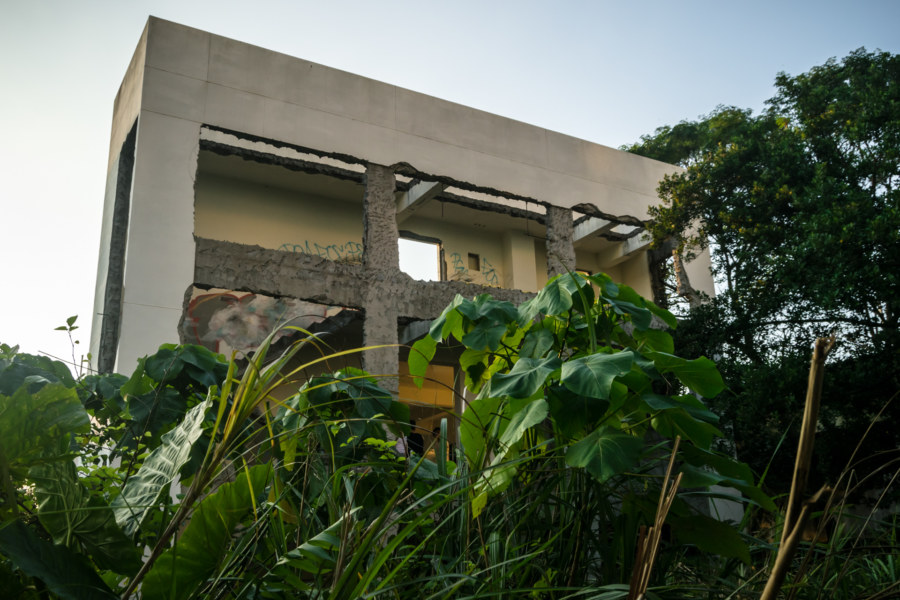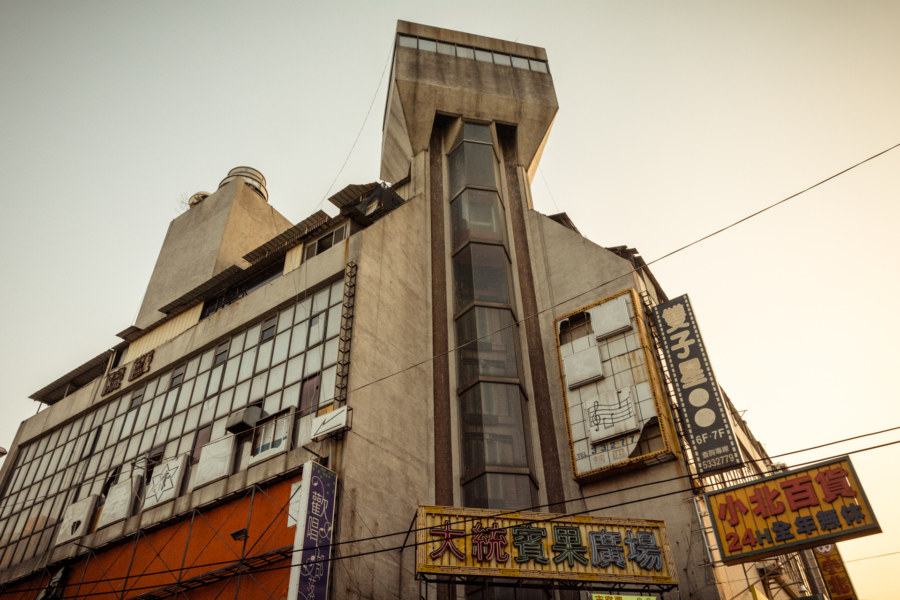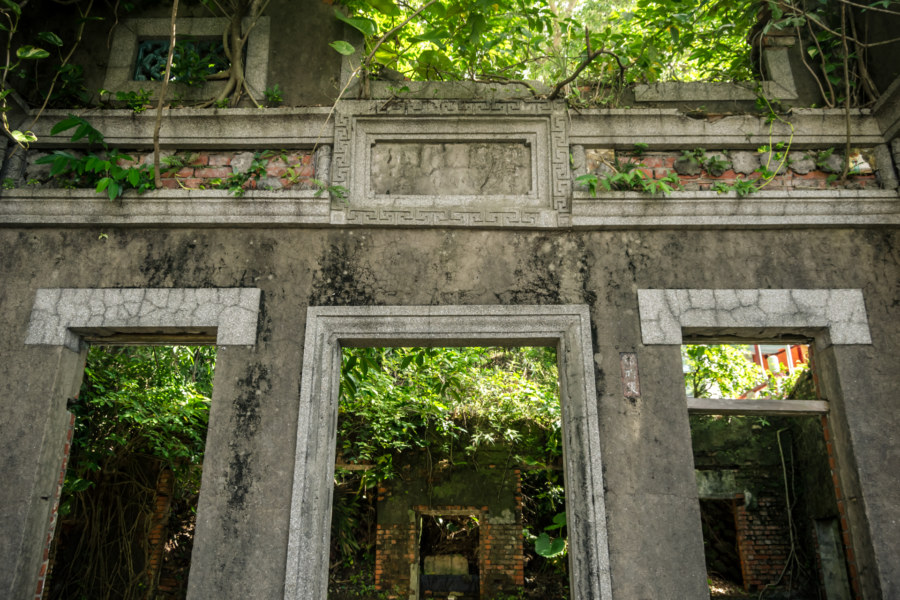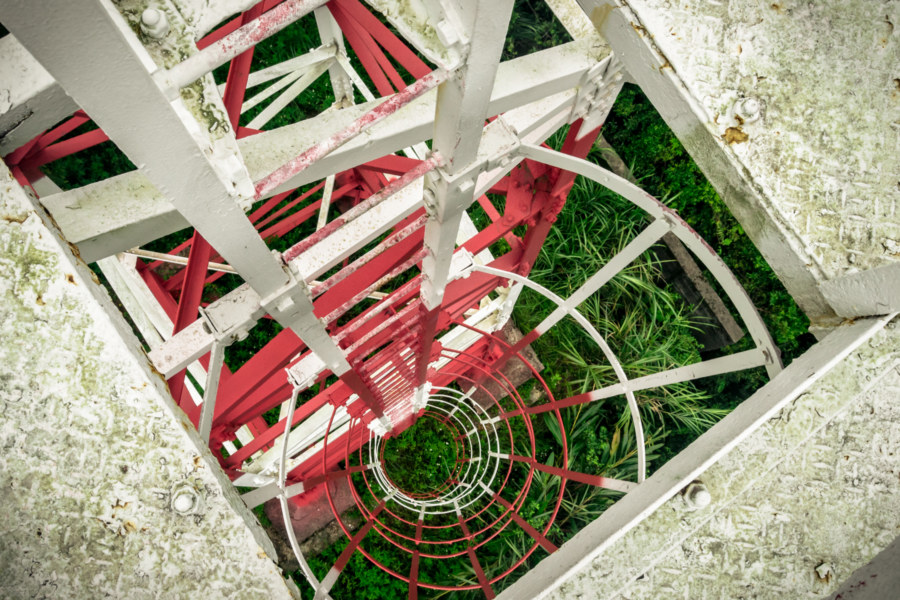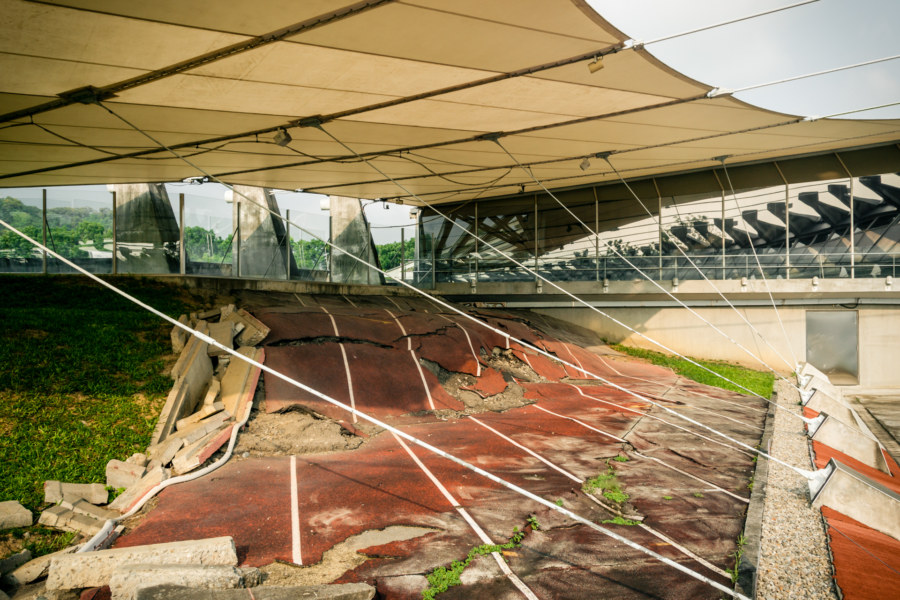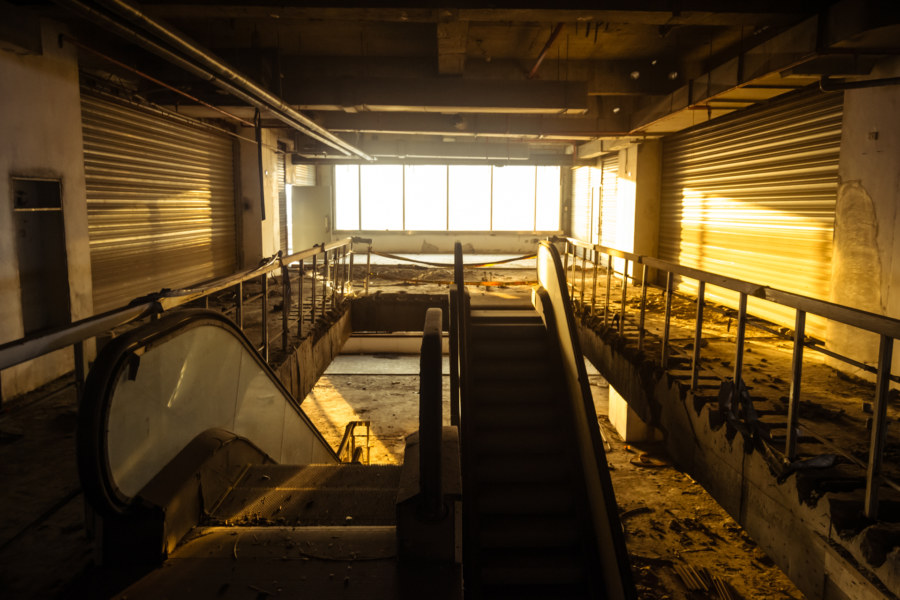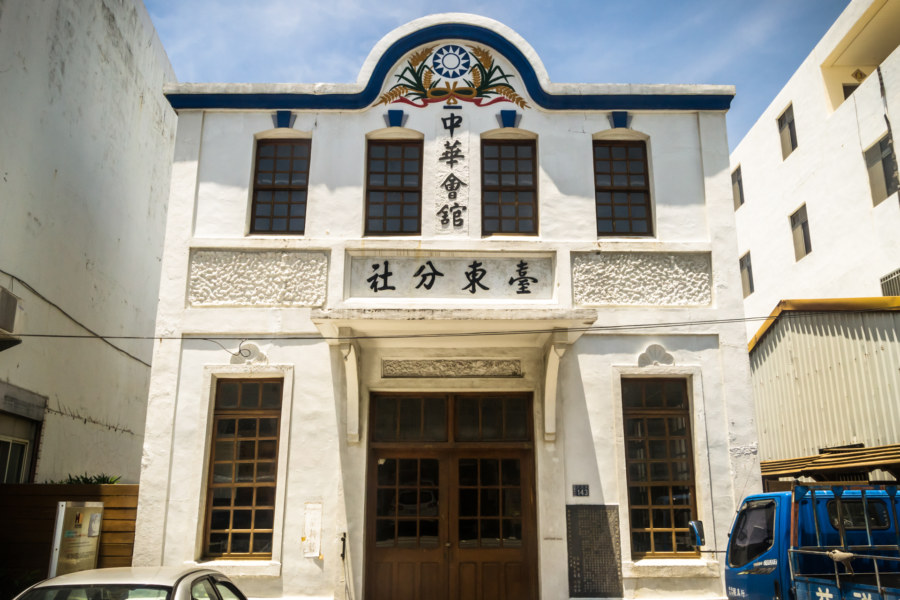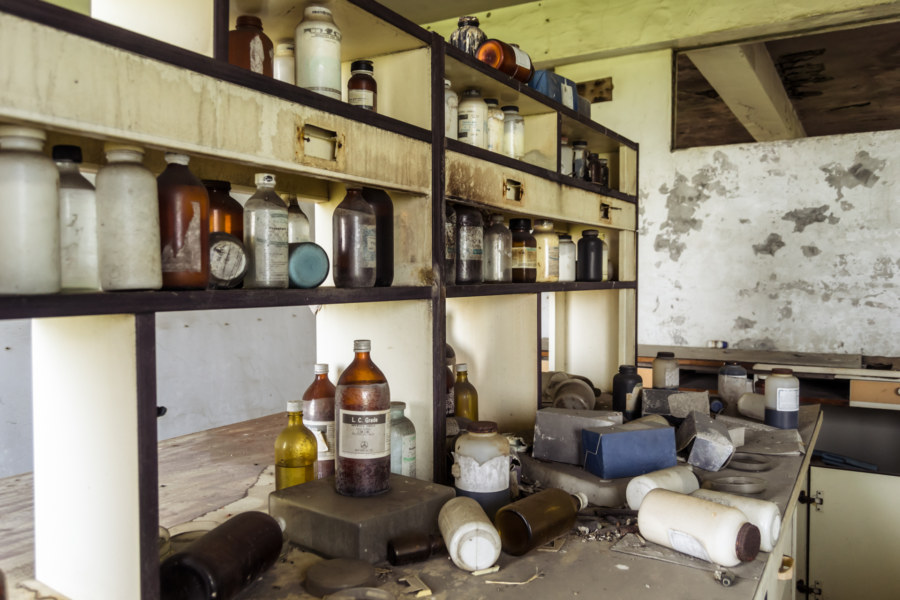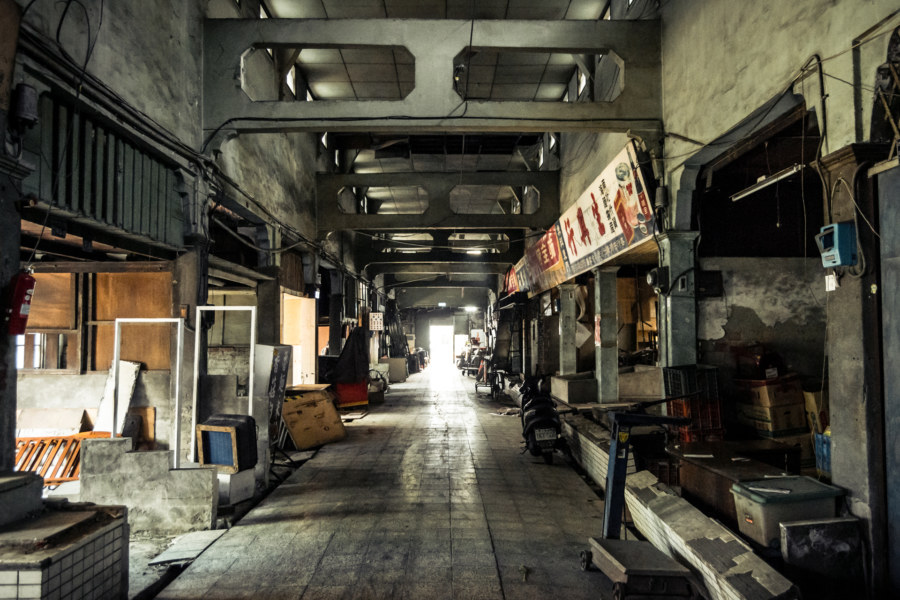The Four-Faced Buddha of Yongkang Street 永康街四面佛 is one of the smallest shrines I have ever seen in Taiwan. It occupies a tiny alcove next to an underground parking garage on Xinyi Road 信義路 east of Dongmen Station 東門站 exit 5 and the original Din Tai Fung 鼎泰豊. This alcove might have been a parking attendants’ booth prior to automating the entire system, although this is not explicitly stated in the material I have reviewed. From what I gather this shrine is the work of a local papaya milk vendor by the name of Mr. Lin. Despite its diminutive size—half a square meter according to some reports—the cost of rent is in excess of 10,000 NT per month!
This category mainly features location-specific content about individual points of interest. These might be historic sites, tourist attractions, abandoned places, or something else constrained by geography.
Hongshulin Whiteloft 紅樹林白厝
Yesterday I seized an opportunity to combine two of my passions, the exploration of abandoned places and appreciation of underground electronic music, at a one-off techno party titled The Whiteloft (白厝). From the event description:
The Whiteloft was originally an abandoned villa where only wild dogs go to sleep. Buried deep in silver grass, just alongside the Golden Waterfront of Hongshulin, Taipei, the building hovers the Interzone between metropolis and mangrove jungle. Humdrum pedestrians seem oblivious of this colossal fortress: its skeleton rusted and exposed, leftover building materials strewn astray. Despite its shroud of mangrove leaves, the building appears raw and naked. We tried to find historical records about this building, but found nothing but total blankness, hence the name The Whiteloft.
Douliumen Building 斗六門大樓
While living down in Changhua City last winter I made occasional forays up and down the TRA Western Line 西部幹線 to scope out places not commonly written about in English. One such place is Douliu, the administrative seat of Yunlin, which hardly earns more than a passing mention in the English language blogosphere. It was a worthwhile trip too—apart from the famous Tàipíng Old Street 太平老街 and the surprisingly large and lively Douliu Night Market 斗六夜市 I also chanced upon another abandoned entertainment complex, the Dòuliùmén Building 斗六門大樓, named after an archaic term for the city dating back to the 17th century. This building was also once home to the Shuāngzǐxīng or Gemini Theater 雙子星戲院.
Khoo Tsu-song Old House 許梓桑古厝
Khóo Tsú-song Old House 許梓桑古厝 is a scenic historic site atop a modest hill near Miaokou Night Market 廟口夜市 in Keelung. Built in 1931 while Taiwan was under Japanese rule, it is structured somewhat like a traditional Taiwanese three-sided courtyard home with some Western influences and building materials. Formally named Qìngyú Hall 慶餘堂, it was the residence of Khóo Tsú-song (1874–1945), an important figure in local politics and civic affairs during the Japanese colonial era. His name is rendered here in romanized Taiwanese Hokkien, in keeping with the conventions adopted by the Keelung cultural bureau.
Asia Cement Aerial Tramway 亞泥空中纜車
Yesterday I went out with a friend to explore several abandoned and neglected sites in Hsinchu, Taiwan. Our first stop was one of many mothballed cable car 空中纜車 towers in Guanxi connecting a stone quarry near Yùshān Village 玉山里 (formerly known as Chìkēshān 赤柯山) with a cement plant next to Jiǔzàntóu Station 九讚頭車站 in Hengshan. There seems to be no general agreement about the formal name for the system so I’m picking one of many options and dubbing this the Asia Cement Aerial Tramway 亞泥空中纜車 for the sake of simplicity.
921 Earthquake Museum 九二一地震教育園區
Deep in the night on September 21st, 1999, the devastating 921 Earthquake ripped through central Taiwan. Thousands were killed, hundreds of buildings collapsed, and entire towns were leveled to the ground, particularly in Nantou and Taichung. Nowadays there are many reminders and memorials to the disaster scattered across the region, among them the 921 Earthquake Museum 九二一地震教育園區 (Chinese version; official site) in Wufeng, which I visited in June 2014.
Fuyou Building 富有大樓
At the end of a bicycle trip to Taitung City in the spring of 2015 I went wandering near the old train station, which had been transformed into the Taitung Railway Art Village 台東鐵道藝術村 in 2004. I had a hunch I might find some hulking derelict near former station front, perhaps an entertainment complex or shopping center in terminal decline, for the new Taitung Station is located far outside the downtown core. Sure enough, within minutes I noticed the telltale signs of decay on a large commercial building several streets over from the art village. This turned out to be the Fùyǒu Building 富有大樓, a genuine mosquito museum 蚊子館 built in the early 1990s under shady circumstances. It was later abandoned and has since become an eyesore and public health menace as well as a political hot potato for local officials.
Taitung Chinese Association 台東中華會館
The historic Chinese Association on Zhongzheng Road in Taitung City.
It never ceases to amaze me what can be learned from keenly observing the streets of Taiwan and following up with a little research online. I only spent one full day in Taitung City at the tail end of a bicycle trip down south this June but managed to chance across a number of interesting sights in that time, this historic building among them.
Located at 143 Zhongzheng Road 中正路, this is the Taitung Branch 台東分社 of the Chinese Association 中華會館, originally built in 1927 while Taiwan was under Japanese rule. A plaque out front features historic information in English (shocking in this part of the country) as well as a direct translation of the name, “Taitung Chunghua Hostel”, but it was more of a clubhouse or assembly hall, not a place to secure lodging for the night. Interestingly, the proper Chinese name is the same one used by the Chinese Consolidated Benevolent Association of America. Have a look at the photos…
Peiyuan Industrial Aquaculture Factory 培源殖產工廠
Bicycle touring is one means by which I discover many abandoned places in Taiwan. Ride in just about any direction long enough, keep your eyes peeled, and you’re bound to encounter the telltale signs of decay and neglect sooner or later. Such was the case one fine morning in June 2015 when I set out to have breakfast in Fangliao, a small town along the coast of central Pingtung, while en route to Hengchun, at the southern tip of the island. I had barely been awake for half an hour when I noticed this partially overgrown ruin along the roadside.
Tainan West Market 台南西市場
West Market 西市場 is a historical site in downtown Tainan dating back to the earliest years of the Japanese colonial era. The first market building at this location was constructed in 1905, back when it fronted onto the milkfish farms of the Táijiāng Lagoon 台江內海. It suffered extensive damage when a catastrophic typhoon struck Tainan in August 1911. An expanded L-shaped structure was built in 1912, making it the largest market in southern Taiwan, but this was damaged by another typhoon in 1920, leading to another round of reconstruction, the results of which are still standing today. The old marketplace remains a hub of commercial activity in this part of the city—but many of its stalls were neglected or abandoned by the mid-2010s, when many of the photos in this article were captured. Presently the old market enjoys heritage status—and an extensive restoration effort was completed in 2020, transforming it into a bright and airy space.
